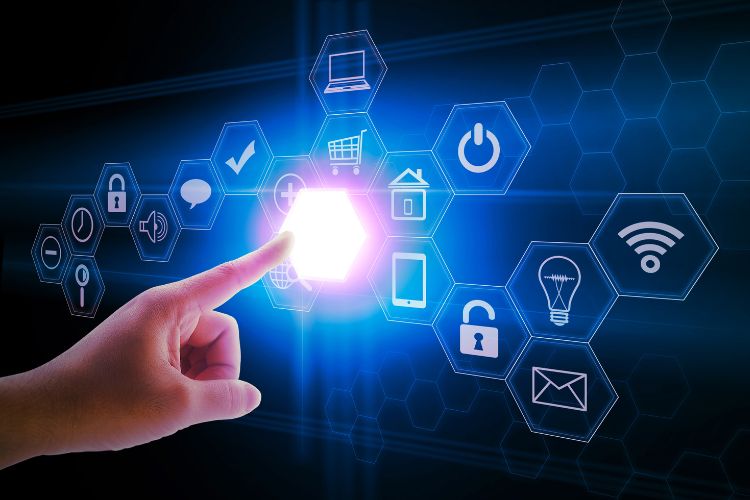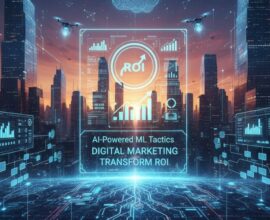Digital marketing has come a long way—from basic banner ads to data-driven personalization that feels almost psychic. But what exactly fuels this evolution? How do businesses keep scaling amid constant algorithm shifts and consumer behavior changes? For modern brands, the answer lies in adapting and optimizing strategies that truly scale, like digital marketing services in Siliguri that align creativity with analytics.
The Journey: From Traditional to Transformational
Not too long ago, marketing was a one-way conversation—billboards, TV commercials, and print ads dominated the space. Fast forward to today, and it’s all about engagement, personalization, and digital storytelling. The evolution of digital marketing has been driven by data, technology, and—most importantly—consumer expectations.
According to Pew Research, over 93% of adults in advanced economies now use the internet, making online visibility the heart of business growth. With that shift, brands are no longer just advertisers—they’re content creators, educators, and community builders.
Modern Digital Marketing: What Drives Business Scalability
In the digital era, scaling a business isn’t just about spending more—it’s about optimizing better. Whether you’re a startup or a global enterprise, the following pillars shape a scalable marketing strategy:
1. Data-Driven Decisions
Gone are the days of guessing what works. Tools like Google Analytics, HubSpot, and Ahrefs allow marketers to understand customer behavior deeply. From keyword intent to conversion tracking, every click now tells a story. Data helps businesses refine campaigns and allocate budgets effectively.
2. Omni-Channel Presence
Customers interact with brands across multiple touchpoints—social media, websites, emails, and even voice assistants. An effective omni-channel strategy ensures a unified experience everywhere. This consistency strengthens brand recall and nurtures long-term loyalty.
3. Content That Connects
Content remains the fuel of digital marketing. But today, it’s not just about blogging—it’s about storytelling with purpose. Videos, podcasts, infographics, and interactive posts humanize brands and build trust. The right content doesn’t just sell—it educates and empowers.
The Power of Paid and Organic Synergy
While SEO builds sustainable visibility, paid marketing accelerates reach. A balanced mix of organic and paid strategies is what makes modern campaigns truly scalable. For instance, partnering with a reliable PPC agency Kolkata can help businesses target high-intent audiences while SEO ensures long-term growth.
Expert Tip: Combine these tactics for better ROI
- SEO: Focus on long-tail keywords and quality backlinks.
- PPC: Use retargeting to convert hesitant buyers.
- Social Ads: Build brand awareness and engagement simultaneously.
Integrating paid and organic channels creates a self-reinforcing cycle—where visibility drives conversions and conversions improve credibility.
Automation, AI, and the Next Phase of Digital Marketing
The next phase of digital growth is driven by automation and artificial intelligence. AI tools are helping marketers predict trends, personalize experiences, and even write smarter content. From chatbots handling inquiries to AI-curated recommendations, automation allows brands to do more with less.
For instance, global companies are leveraging AI-based CRMs to segment audiences and tailor messages at scale. Meanwhile, small businesses are automating their email marketing and analytics to stay competitive. The future belongs to those who harness technology intelligently.
Humanizing Marketing in a Data-Driven World
As technology becomes more advanced, the challenge lies in staying human. People don’t want to interact with algorithms—they want authentic stories. This is why even a leading digital marketing company in India emphasizes emotional branding alongside performance marketing. It’s not just about selling—it’s about solving problems, inspiring trust, and creating meaningful digital experiences.
Three human-centric strategies every brand needs:
- Transparency: Share authentic stories about your brand journey.
- Community Building: Engage users through social groups or interactive forums.
- Personalized Experiences: Treat each customer as unique—because they are.
As McKinsey reports, personalization can deliver 5–8x the ROI on marketing spend and lift sales by 10% or more—a clear indication that empathy sells better than algorithms.
Frequently Asked Questions
1. How has digital marketing evolved over the years?
It has shifted from simple online advertising to data-driven, AI-powered strategies that emphasize personalization, user experience, and brand authenticity.
2. Why is data-driven marketing important?
Data enables brands to understand consumer behavior, optimize campaigns in real-time, and maximize ROI through informed decision-making.
3. How can small businesses scale with digital marketing?
Small businesses can scale by investing in SEO, leveraging social media, running PPC ads, and focusing on customer retention through personalized engagement.
4. What trends will shape digital marketing in 2025?
Expect to see more AI integration, voice search optimization, interactive content, and privacy-focused marketing dominating the landscape.
Final Thoughts
Digital marketing is no longer a luxury—it’s the foundation of growth. The brands that thrive are those that adapt, innovate, and remain authentic amidst automation. Whether you’re refining your content strategy or scaling your ad campaigns, remember: the best marketing doesn’t feel like marketing—it feels like connection.
Blog Development Credits:
This blog was conceptualized by Amlan Maiti, crafted with advanced AI tools such as ChatGPT, Gemini, and Copilot, and finally optimized by Digital Piloto Private Limited.





